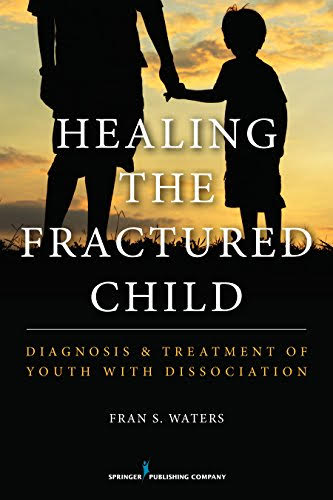“The brain functions in different states, much like a radio operates at AM and FM frequency bands…the brain is normally tuned to FM stations to access memories, but needs to be tuned to AM stations to access traumatic memories”- Jelena Radulovic
The reason for the part 2 of this chapter review is because of the central importance of Porges’ Polyvagal Theory, Bowlby’s Five Stages, and Perry’s Use-Dependent Development of the Brain Theory.
The Polyvagal Theory is an incremental part of conceptualizing dissociation. The theory is based on Porges’ finding that there is a third Autonomic Nervous System (ANS) (Parasympathetic, Sympathetic, Social Engagement). These 3 systems are also evolutionarily built from primitive to higher functioning systems.
This Social Engagement system is responsible for a persons ability to connect and respond to others socially.
One way to explain the Polyvagal theory is through the use of a traffic light. The nervous system uses a scanning process of the environment called neuroception which acts as the brake system of a car and based on what is observed in the surroundings the switching of these different systems will occur (Porges, 2011).
Green Light (Social Engagement)– In this physiological state, the body presents with the following: slower heart rate, saliva, and digestion are stimulated, facial muscles are activated, increase eye contact and vocal tone, and middle-ear muscles turn on (Porges, 2011).
Fran (2016) emphasizes the importance of understanding this system by stating
The most advanced branch of the ANS is the social engagement system. It is mediated by the myelinated portion of the vagus nerve and fosters social communication and maternal bonding via facial expressions, vocalization, and listening. (p. 17)
Yellow Light (Sympathetic)– danger-fight or flight response is activated within this state, also the following: heart speeds up, pain tolerance goes up, flat facial affect, middle ear muscles turns off-hearing restricted to low and high frequency sounds (Porges, 2011).
Red Light (Parasympathetic)– life threat-immobilization/freezing, and death feigning response is activated (dissociation falls under this parasympathetic system). Physiologically this presents as the following: turning off behavior and consciousness through reduced heart rate and blood pressure. (Porges, 2011).
The vagus nerves acts a neural braking system either easing off the brake to move towards social engagement or putting the pedal to the floor for dissociative reaction to life threat.
Now that an understanding of the physiological structure of the autonomic nervous systems’ involuntary wiring due to trauma has been explored Fran utilized Bowlby’s model to connect attachment theory and trauma theory.
Fran relies on Bolwby’s Five Stages of Psychological Response to Grief and Mourning to bridge the gap between attachment theory and dissociation. Although, Bowlby’s whole attachment theory is the bedrock for the STM model.
The Five Stages of Grief act as a connection in that every trauma that a child experiences from a caregiver is a loss of the caregiver. The stages are as follows:
(1) Thoughts and behaviors still directed towards the lost object.
(2) Hostility towards others.
(3) Appeals for help.
(4) Despair, withdrawal, regression, and disorganization.
(5) Reorganization of behavior directed toward a new object.
This is a benchmark when evaluating and assessing traumatized youth it is not exhaustive, sequential, or deterministic for each child. Children can navigate through all of these stages or not, nor do children necessarily develop discrete self-states as a result of the trauma. This is a lens for trauma assessment through the eyes of attachment theory.
Lastly, Perry’s work on the Use-Dependent perspective on the brain is a lens for the STM model. This theory is a way to conceptualize how trauma changes brain structure in youth. Fran harkens to Perry’s explanation of this theory when he stated
…repetitive neural activation caused by repeated exposure to threatening stimuli causes sensitization of the nervous system. The more a neural network is activated, the more there will be use-dependent internalization of new information needed for survival. The more frequently a certain pattern of neural activation occurs, the more indelible the internal representation” (p. 18)
The internal representation becomes a template from which the child understands experiences moving forward. This also could be the reason why self-states can be trait-oriented such as being the angry or sad part. Because the brain utilizes these internal representations to manage new experience the consistent use entrenches these internal representations into discrete self-states that are characteristic of Dissociative Identity Disorder.
All of these theories and their constructs act as the infrastructure to the Star theoretical model. Each of these theories provides interpretive power and a lens to assess and treat the multi-dimensional impact of trauma.
Next time I will be reviewing chapter 2 What’s Going On With This Child? Recognizing Warning Signs of Dissociation in Traumatized Children.
Reference:
Porges, S. W. (2011). The polyvagal theory: Neurophysiological foundations of emotions, attachment, communication, and self-regulation. New York: W.W. Norton.
Waters, F. (2016). Healing the fractured child: Diagnosis and treatment of youth with dissociation. Springer publishing company.





